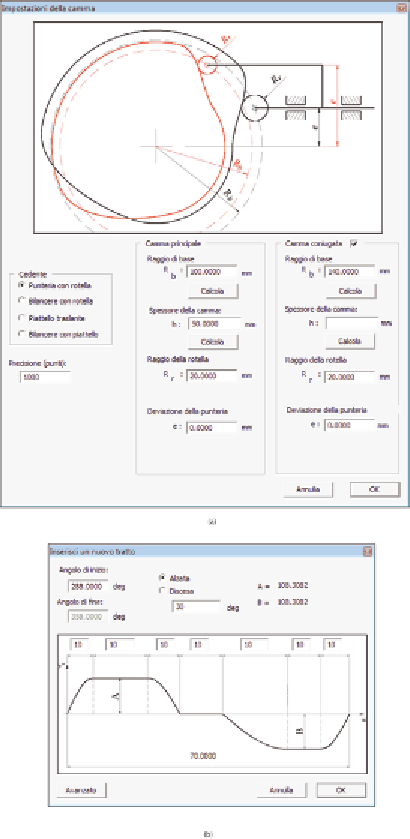Information Technology Reference
In-Depth Information
Figure 1. Graphical user interface (GUI) of
CamCreator
solved manually. But to design more complicated
systems, the use of a computer aided approach
is unavoidable. A problem-oriented software is
able to define different geometries using a trial-
and-error algorithm in few minutes. While the
number of input and output variables is high,
a congruous computer software gives the pos-
sibility to the user to focus on just few of them
a time and to draw graphs of the variation of the
output respect to the change of input. Through an
automatic algorithm based on trial-and-error or
more complex optimization schemes like genetic
algorithm (GA),the software may be even able
to determine the best design itself.
However the programmer has to consider that
for the educational purposes, graphical user in-
terface (GUI), its ease of use, comprehensiveness
and visual aspects, plays a very important role,
because it is the main object attracts the learners
and incite them to focus on the lesson. Here the
virtual environments may offer better facilities.
Through applying this approach, more clear and
exact illustrations of the objects and the problems
will be available. Therefore every sketch, drawing
or schemes, but moreover the simulated animations
and movies may accelerate the learning process.
As an example Figure 1 shows a graphical user
interface designed for the definition of the input
needed to design a desmodromic cam. In Figure
1a the software asks for the general properties of
the cam so it provides the opportunity to import
the geometrical information. Figure 1b introduces
a simple 7-steps acceleration law, so it asks for
loading system.
Programming for such specialized software
needs the deep and comprehensive understand-
ing of the programmer about the designing of
the desmodromic cam, to consider every kind of
mistake the user may make and prevents them by
providing appropriate warnings or error messages.
Figure 2 shows how the software can easily
present different representing graphs, such as the
displacement (on the top of Figure 2a) to the ac-
celeration (on the bottom of Figure 2a).
Such software can be equipped by virtual 3D
configuration which is the forte of computer aided
engineering education. This appliance supplies a
live performance of the machine and its kinemati-
cal mechanisms or its dynamics in a 3D world,
without building the real part or prototyping it.
To make this scenario cost-effective there are
freeware utilities such as OpenGL, to animate the
final results. This application has been shown in
Figure 3.

Search WWH ::

Custom Search